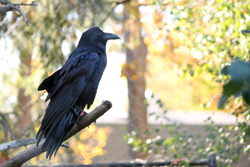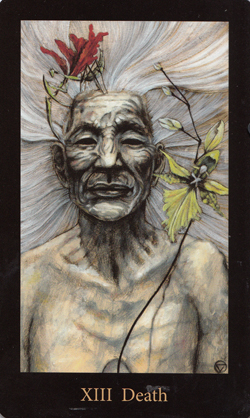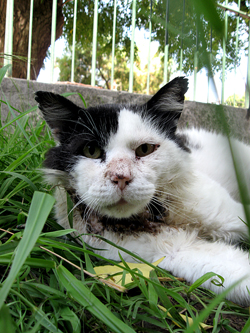|
October 2014 Inside a Witch’s New Year on Samhain Samhain (SOW-in or SAH-win), also known as Halloween, the Witch’s New Year, or All Hallow’s Mass, begins like most major Sabbats on the Wheel of the Year with a gathering of witches. Young and old, male and female, they have dressed for the solemn occasion in jeans or black skirts and black sweaters. Most wear a pentacle necklace, an encircled five-pointed star symbolizing spirit, earth, fire, air, and water. “This,” they say, “is how real witches dress.” As the autumn light wanes and the air cools outside, the witches build two separate altars, one somber and the other joyous. Samhain is a time to honor and remember those who have died during the year, and to note those who were born.  Photo Credit: Artist Marie White, A fire snaps and crackles in a stone fireplace, spreading welcome warmth throughout the spacious family room. The first altar is draped in black and adorned with black candles and red and orange mums. Photos and mementos of those who have died are placed on the altar. Friends. Pets. Stepfather. Father. Mother. Because the veil between the spirit world and the human world is thinnest at Samhain and Beltane, those who have long passed also come to mind. For the third year, a very young witch places a dog-eared photo of her deceased cat on the altar. Many of the witches add the Death card from their personal tarot deck. Number XIII, Death represents one part of the cycle of life, death, and rebirth. It marks the end of a phase, major change, and transformation.  Photo Credit: A pacifier, en.wikipedia.org In stark contrast, the smaller second altar is festooned in pastels: pink, powder blue, and yellow. Birth announcements, baby photos, baby rattles, sunny daisies, and white candles are added. Nearby in the kitchen, a few witches tend to the potluck feast. An enormous pot of savory-smelling soup bubbles on the stove. The scent of freshly baked bread fills the air, two loaves, one for the feast and one for the ritual. Cherry tomatoes from the garden adorn a green salad. Shiny apples are stacked in a white bowl, and moisture beads on the foil covering a warm casserole dish. Soon the feast preparations are abandoned and everyone gathers for the ritual. The lights in the family room are dimmed. Each person is welcomed into the ritual by the High Priestess and then finds a seat in the circle rimming the two altars. After setting sacred space, the witches call in the Guardians of the Watchtowers of the Four Directions and light the Quarter candles. Then the witches light a silver candle for the goddess and a gold candle for the god. Both deities are invited to lend their energy and power to the ritual. The High Priestess explains that Samhain is celebrated on its cross-quarter day, the midpoint between the fall equinox (Mabon) and the winter solstice (Yule). Some pagans celebrate Samhain on Halloween.  Working clockwise around the circle, the witches and their friends talk about the people who have passed. One man loved to fish. A mother was known for the smart outfits she tailored. A friend with pixie hair was an accomplished artist. The cat was a good listener and snuggle. Chant: The Blood of the Ancients (by Charlie Murphy) The witches raise glasses of sparkling apple cider in honor of the souls who have transitioned. Then they lighten their hearts by shifting to the second altar and announce the babies who have been born to their friends and family. Each witch speaks a blessing or wish for the newly born. Glasses are refilled. In turn, each person asks the person on his/her left, One of the loaves of bread is passed around the circle. Each person breaks off a piece and asks the person on their left, The witches thank the god and goddess for attending their rite and then snuff out the silver and gold candles. Then, working counterclockwise, they thank the guardians for attending the ritual and extinguish the Quarter candles. The circle is open but unbroken. Time to feast! |











